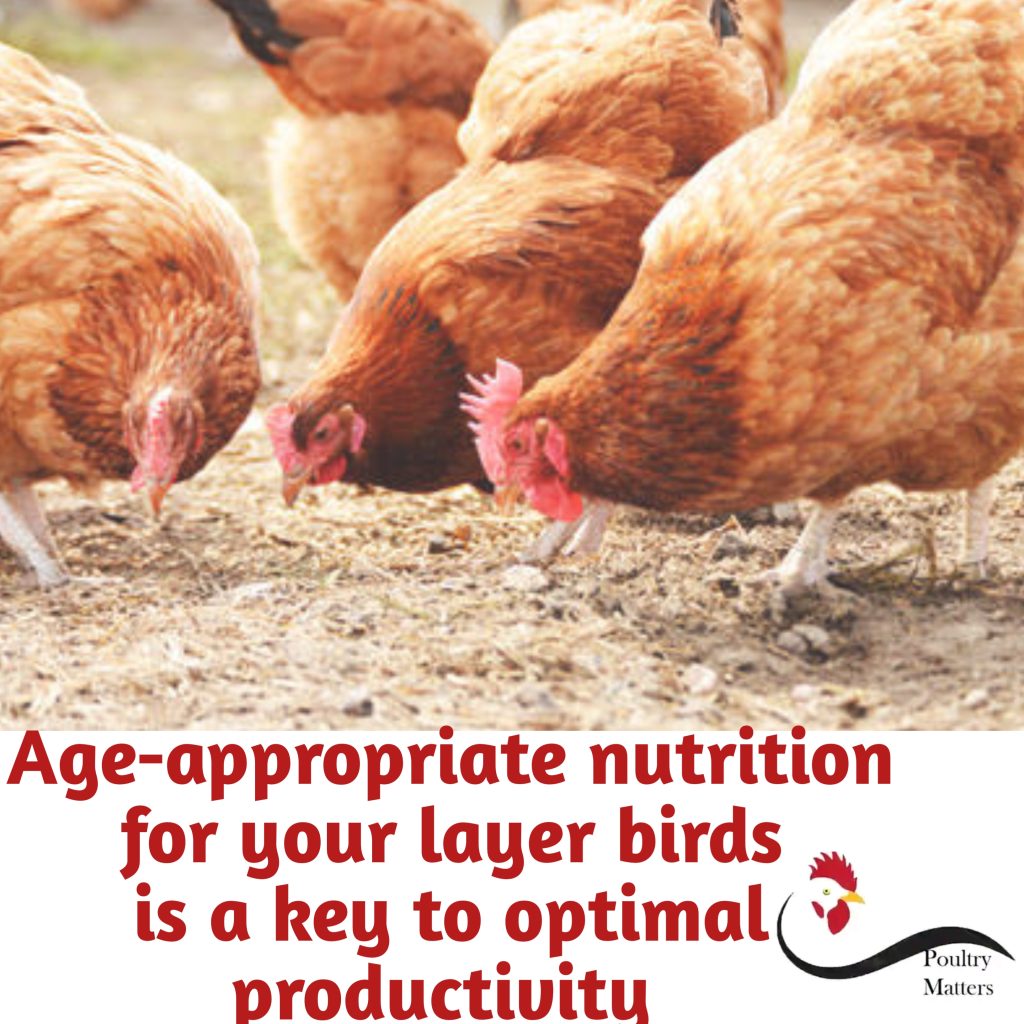Layer Birds Feeding – Providing Age-Appropriate Nutrition
Layer birds are usually female chickens (hens) that are bred and managed to lay a high number of eggs over a productive period. Common breeds of layer birds include Isa Brown, Leghorn, and Hy-Line Brown. Layer birds typically begin laying eggs at around 18 to 20 weeks of age, and can continue producing eggs efficiently for up to 72 weeks or more if well managed. They require nutrient-rich feed, especially high in calcium, protein, and vitamins, to support consistent egg laying and maintain good health.
Feeding layer birds with age-appropriate nutrition is one of the most important factors that determines their health, egg-laying ability, and overall productivity. Just like humans, poultry birds require different nutrients at different stages of growth. Giving them the right type and amount of feed at the right time ensures healthy development and optimal egg production.
Here’s a detailed breakdown of feeding layer birds based on their growth stages:
Early life: 0 – 6 weeks old
Feed Type: – Starter Mash
Nutritional need: The birds need high protein (18–20%), energy, vitamins, and minerals
Purpose: The nutritional requirement at this stage is for the following reasons:
- Supports rapid growth and development of organs and bones
- Strengthens the immune system of the birds
- Prepares chicks for the next phase of development
Feeding Tips:
- Provide feed frequently in clean feeders to encourage eating
- Ensure clean, fresh water is always available
- Monitor weight gain and general activity levels of the birds
Growing phase: 7 – 16 weeks old
Feed Type: Grower Mash
Nutritional Need: The birds need moderate protein (16–18%), balanced minerals, controlled calcium
Purpose: The essence of feeding the flock at this stage is to:
- Supports steady growth without causing early maturity
- Prepares birds for the laying stage
- Prevents excessive weight gain, which can affect future egg production
Feeding Tips:
- Avoid giving calcium-rich feed too early, as it may lead to kidney damage or reproductive issues later
- Maintain feeding consistency and avoid sudden feed changes
Pre-Lay Phase: 17 – 18 weeks old
Feed Type: Pre-Layer Mash
Nutritional Need: Slightly increased calcium (1.8–2%), balanced protein and phosphorus
Purpose:
- Prepares the reproductive organs for egg laying
- Smooth transition from grower to layer phase
Feeding Tips:
- Introduce pre-lay feed two weeks before the first egg is expected
- Avoid overfeeding to prevent obesity, which may reduce egg production
Laying Phase : 19 weeks and above
Feed Type: Layer Mash or Pellets
Nutritional Focus: High calcium (3.5–4%), moderate protein (16–18%), essential vitamins (A, D3, E) and trace minerals
Purpose:
- Supports strong eggshell formation and consistent egg production
- Maintains bird health and stamina during egg-laying cycles
Feeding Tips:
- Always use feed designed specifically for laying hens
- Ensure constant access to feed and water
- Include grit or crushed oyster shell for extra calcium, if needed
- Monitor feed intake and egg production regularly
General Feeding Best Practices:
- Clean Feeders Daily: Prevent mold or spoilage
- Provide Clean Water: Essential for digestion and egg production
- Monitor Health: Sudden drops in feed intake may indicate illness
- Adjust Feed Quantity: Based on bird activity, weather, and growth stage
Benefit of serving Age-Appropriate Feed to the flock
- Promotes healthy growth and bone development
- Prevents reproductive problems
- Ensures early and sustained egg production
- Reduces feed waste and improves cost-efficiency
- Enhances overall flock productivity and profitability
Conclusion –
Providing a clean, safe, and well-ventilated housing system, along with adequate lighting, is essential to the productivity of the layer birds. Similarly, providing age-appropriate nutrition is crucial to raising healthy and productive layer birds.
Each stage of a bird’s life—from chick to point-of-lay and beyond—has specific nutritional needs that must be met to ensure optimal growth, strong immunity, and consistent egg production. As a poultry farmer, committing to a well-planned, stage-specific feeding program is a critical step toward improving your flock’s performance and maximizing your farm’s profitability.
Take action today — review your current feeding practices, consult with a poultry nutrition expert if needed, and make sure your birds are getting exactly what they need at every stage. A healthy layer bird starts with the right feed.
Are you interested in guinea fowl farming, read more

